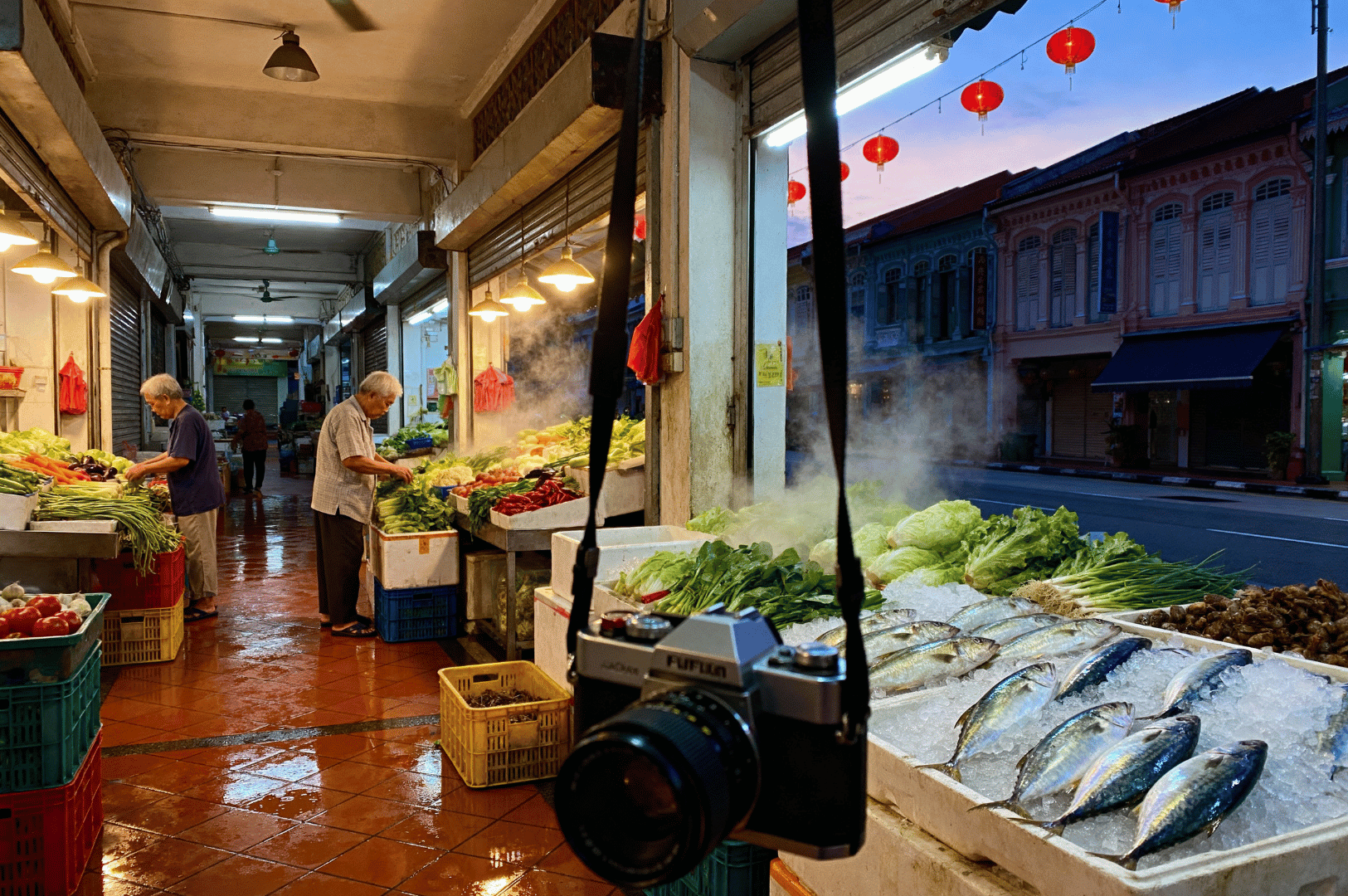My alarm rings at 4:00 AM—long before most people are awake. But for a Singapore street photography enthusiast like myself, this time is perfect for exploring the living heart of the city. The streets of Chinatown remain draped in quiet, but within the iconic Chinatown Complex Market, stalls flicker to life and the real Singapore begins to stir. This pre-dawn world is both the present and a thread connecting to the city’s past, which is why I chose it as the foundation for my latest series in street photography.
Exploring Singapore’s Market Culture at Dawn
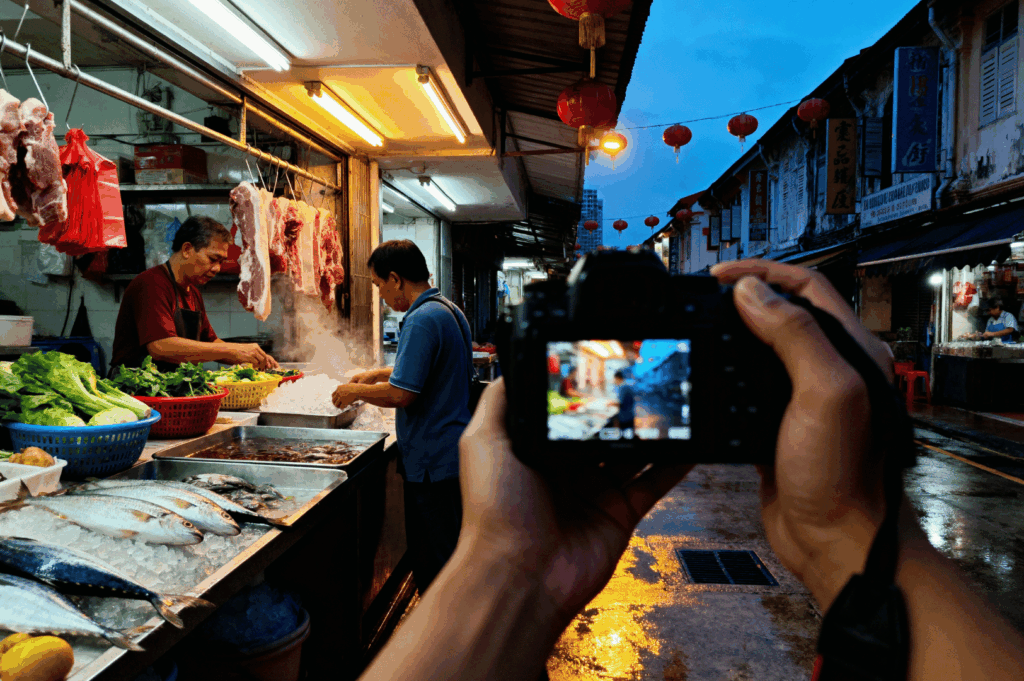
Street photography in South East Asia offers endless opportunities, but Singapore’s Chinatown holds a unique place in my heart. As a photographer, I wanted to go beyond visual clichés. Instead of shooting only during crowded, noisy daytime hours, I began visiting the Chinatown Complex Market at dawn. Here, you see Singapore as most never do: before sunrise, when vendors, hawkers, and butchers quietly prepare for the day ahead.
The market itself is a remarkable place. The intricate mix of stalls offering fresh food, nostalgic snacks, and local drinks all serve as living evidence of Singapore culture. Documenting this experience through images, I sought to capture the character of the heritage market that manages, against all odds, to survive in a rapidly modern city. This wasn’t just about making photographs—it was about recording living history.
Technical Challenges and Creative Process
Shooting photographs at dawn in the market presented a set of unique technical hurdles that pushed my craft as a street photographer. The blend of artificial and ambient light means conditions are always shifting. Fluorescent bulbs hang over fishmongers’ stalls, mixing with the first hints of daylight as the sun begins to rise. These dramatic contrasts in light levels forced me to experiment constantly. I leaned heavily on my 35mm prime lens, using a wide aperture to maximize available light, and I frequently adjusted my ISO to balance brightness without sacrificing the integrity of my images.
The shadows, movement, and tight spaces demanded not just technical knowledge but adaptability. I shot mostly in RAW but occasionally used JPEGs to speed up workflow when moments happened too quickly for perfection. In this environment, storytelling was always my priority, and the occasional blur or grain became part of the image’s character.
Building Relationships for Authentic Storytelling
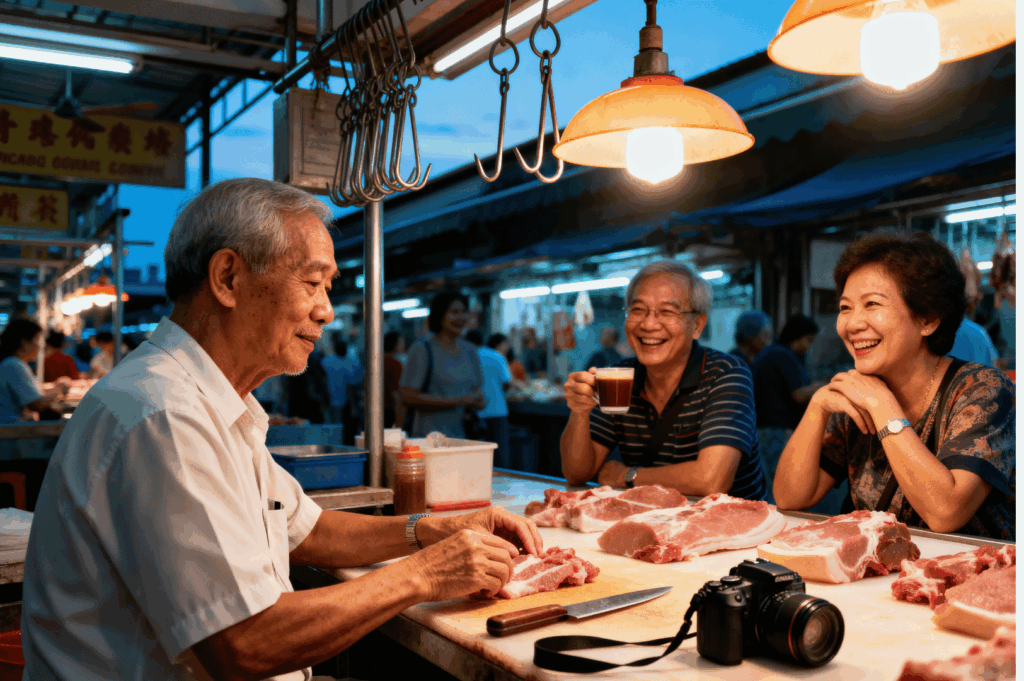
Great Singapore street photography depends not just on skill, but on genuine connections with people. During those early morning hours, vendors see you not as a tourist, but as someone genuinely interested in their lives and stories. On my first visits, I rarely raised my camera. Instead, I bought breakfast, chatted with shopkeepers, and learned their routines.
Meeting Uncle Lim, the butcher in his stall, transformed my project. His decades of work in the market became the foundation for a relationship based on trust, not transaction. He and other vendors allowed me into their circle, sharing anecdotes and respecting my intent to document, not disturb. Their willingness to let me photograph them at work—sharpening knives, arranging produce, serving regulars breakfast—created powerful, genuine images impossible to capture as an outsider rushing through.
These experiences highlight an important lesson in street photography: sometimes, more is accomplished by listening than by shooting. Earning trust unlocks extraordinary moments, and it’s in these interactions that documentary photography transcends mere observation to become an act of cultural preservation.
Market Photography: Recording Changing Times
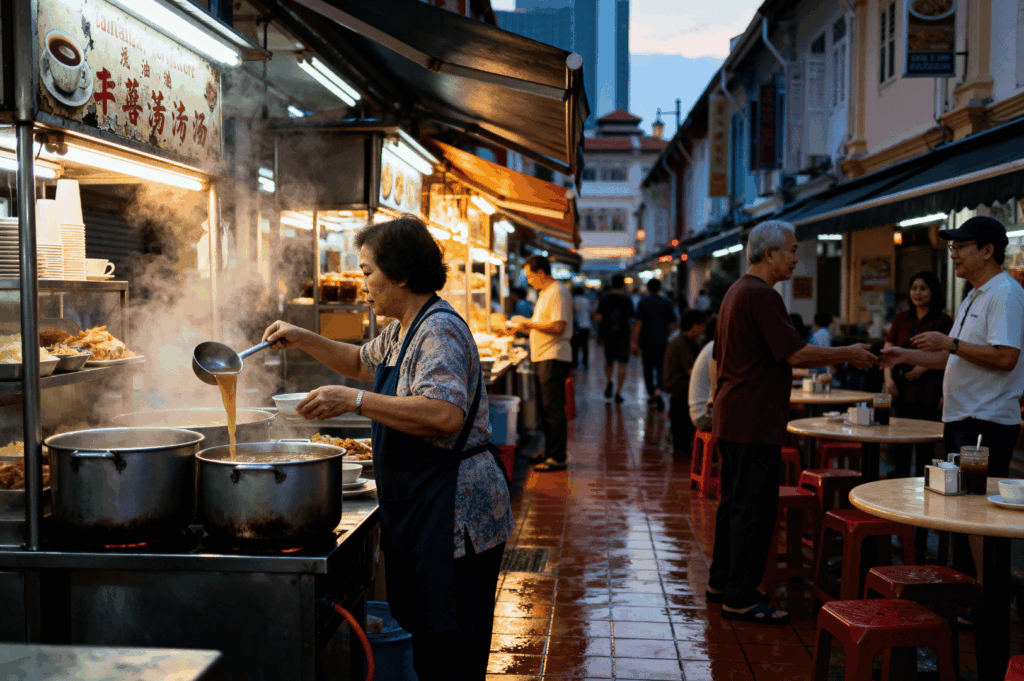
Chinatown Complex Market isn’t solely a tourist spot—it’s a vital institution sustaining Singapore’s food scene and embodying a culture that values community over commerce. Walking its halls in the early hours, I was struck by the rich mix of heritage and modernity. Stalls are filled with the sights and smells of traditional fare, as well as hints of the city’s shifting identity. Here, the pace is unhurried, conversations last just a little longer, and gestures carry the weight of habit passed down through generations.
My photographs became more than just documents; each image tells a story about Singapore’s present, rooted deeply in the heritage of its people. The faces, hands, and postures revealed the resilience and grace in daily routines. No two mornings in the market were alike, but every visit deepened my appreciation for Singapore’s commitment to honoring its past even as it evolves.
The Unexpected Rewards of Street Photography
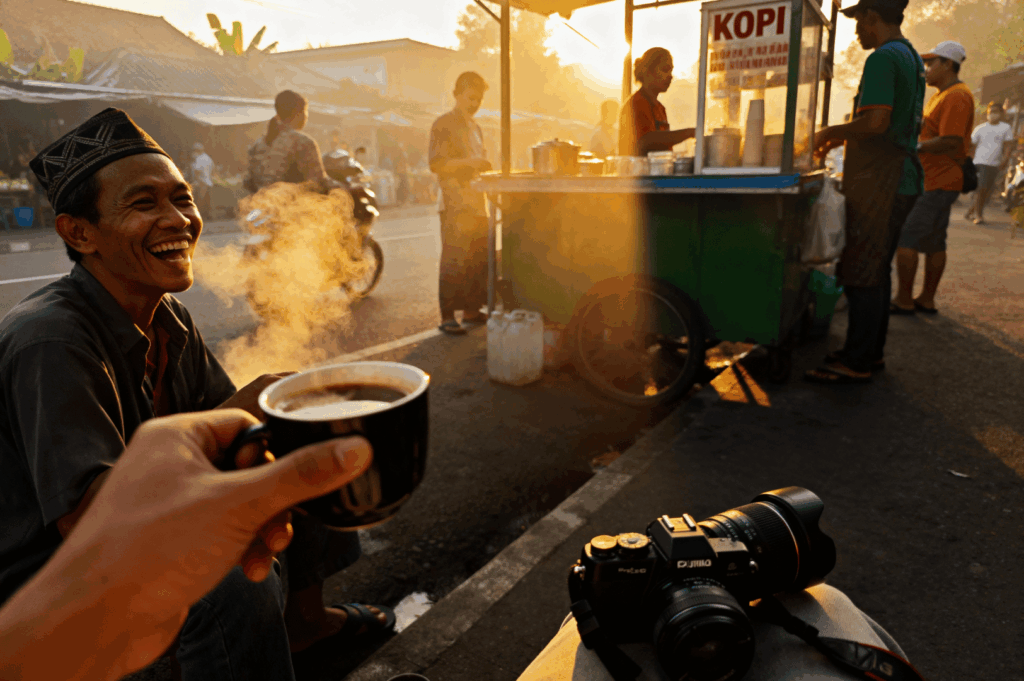
There were many mornings I left the market without a single strong photograph, and times when vendors were wary or simply too busy. Street photography in a place as dynamic as Singapore will test your patience and empathy. But the setbacks, in their own way, made the eventual successes sweeter. When images finally came together—capturing a vendor’s laugh or the steam rising from a bowl of noodles in perfect light—I knew I was not just making a photograph, but capturing a piece of living culture.
If you’re interested in photography or just curious about heritage and food in Singapore, I highly recommend a visit to the Chinatown Complex Market at dawn. You don’t need expensive gear to start—just curiosity and respect for the people who make this vibrant world possible.
